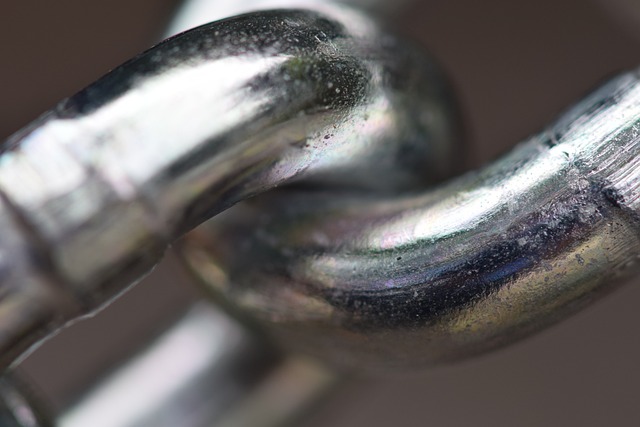Internal linking, powered by WordPress linking plugins, significantly enhances user experience and SEO. These plugins automate link generation between pages, signal search engines about comprehensive content, and guide users to related content. The right plugin, like Yoast SEO or All in One SEO Pack, offers intuitive interfaces, advanced features (customizable anchor text, automated link placement), and optimization tools for improved site structure and user engagement. Effective internal linking, combined with analytics tracking, boosts search rankings by filling content gaps, refining strategies, and maintaining high performance metrics.
Discover the power of internal linking in WordPress websites with our comprehensive tutorial. Learn how strategic linking enhances user experience and SEO rankings. This guide explores the core concepts, delves into popular WordPress linking plugins, and provides a step-by-step setup process. From choosing the right tool to creating effective links and measuring performance, you’ll master the art of internal linking with ease. Boost your site’s visibility and engagement using powerful WordPress linking plugins.
- Understanding Internal Linking in WordPress Websites
- The Role of WordPress Linking Plugins: An Overview
- Choosing the Right Plugin for Your Tutorial
- Step-by-Step Guide: Installing and Setting Up a Plugin
- Creating Effective Internal Links: Best Practices
- Measuring Success: Analyzing Link Performance
Understanding Internal Linking in WordPress Websites

Internal linking is a powerful strategy for enhancing user experience and improving search engine optimization (SEO) on WordPress websites. It involves creating hyperlinks between pages within your site, allowing visitors to navigate through related content seamlessly. By using a WordPress linking plugin, website owners can optimize their internal linking structure, ensuring each page connects to relevant others in a logical and strategic manner.
WordPress linking plugins offer a range of tools for building an effective SEO strategy. These plugins help identify and suggest additional internal links based on your existing content, improving the overall connectivity of your site. With proper optimization, internal links can boost user engagement by guiding visitors towards valuable resources, increasing time spent on-site. This, in turn, signals to search engines that your website provides comprehensive information on a particular topic, leading to better rankings in search results.
The Role of WordPress Linking Plugins: An Overview

In today’s digital landscape, a well-crafted WordPress linking plugin can be a game changer for any website aiming to optimize its SEO. These plugins are designed to enhance internal linking strategies by automatically generating links between relevant posts and pages on your site. This strategic approach improves user experience by guiding visitors through your content, which also signals search engines that your site is well-structured and worth indexing.
By utilizing a WordPress linking plugin, you can efficiently create contextual links that not only drive traffic across your website but also help in building a comprehensive content tapestry. A good plugin offers tutorials and walkthroughs for users to master the art of optimization, ensuring every link contributes to better search engine rankings. Whether you’re a seasoned WordPress user or just starting, these plugins simplify the process of crafting an effective internal linking strategy through straightforward tutorials and step-by-step guides.
Choosing the Right Plugin for Your Tutorial

When creating a tutorial or walkthrough for mastering internal linking on WordPress, selecting the appropriate WordPress linking plugin is a strategic move that can significantly enhance your content’s performance. The right tool ensures seamless integration and optimization, allowing you to effectively guide users through your site’s navigation while improving SEO. Look for plugins that offer intuitive interfaces and robust features tailored for both beginners and advanced users.
A well-chosen WordPress linking plugin should provide a comprehensive WordPress linking plugin strategy and WordPress linking plugin SEO capabilities. This includes options for easy anchor text customization, automated link generation, and strategic placement of internal links based on content relevance. By leveraging such plugins, you can streamline the process of creating an optimal site structure that boosts user engagement and search engine rankings.
Step-by-Step Guide: Installing and Setting Up a Plugin

Follow this step-by-step guide to install and set up a powerful WordPress linking plugin, enhancing your site’s SEO and user experience. Start by identifying the right tool; popular options include Yoast SEO, All in One SEO Pack, or SEOPressor. Once chosen, access the plugin from your WordPress dashboard. Next, configure basic settings: enter site title and description, select target keywords, and set up sitemaps.
For advanced optimization, explore WordPress linking plugin tips like integrating internal links with content updates, optimizing anchor text, and ensuring proper category and tag linking. Don’t forget to test your changes using the built-in analysis tools. By implementing these steps, you’ll be well on your way to mastering WordPress linking plugin SEO for improved search rankings and user engagement.
Creating Effective Internal Links: Best Practices

Creating Effective Internal Links is an art that can significantly boost your website’s performance and user experience. One powerful tool to master this art is a WordPress linking plugin, which offers a variety of features tailored for optimal navigation and SEO strategies. In a WordPress linking plugin tutorial, you’ll learn how to leverage these tools for better content interlinking.
Best practices include strategic placement of links within your content, ensuring they enhance readability rather than disrupt it. A well-designed WordPress linking plugin strategy involves understanding your audience’s behavior and creating a logical flow of information. For instance, link to relevant, related posts at the end of each article; this keeps users engaged and reduces bounce rates. Additionally, optimize anchor text for SEO by using descriptive keywords that accurately represent linked content, enhancing both user experience and search engine rankings in the process.
Measuring Success: Analyzing Link Performance

Measuring success is a vital step in any WordPress linking plugin tutorial or walkthrough. By employing analytics tools provided by your chosen plugin, you can gain valuable insights into the performance of internal links. These metrics will help you understand which links are driving traffic and improving user engagement. Look for patterns that indicate high-performing links—those with lower bounce rates and higher time spent on page—and optimize your strategy around them.
WordPress linking plugins offer a range of tips and best practices to enhance SEO. Analyzing link performance allows you to identify content gaps and refine your internal linking structure. This data can guide you in creating more effective WordPress linking plugin strategies, ensuring that relevant pages are interconnected seamlessly, thereby boosting search engine rankings and user experience.
